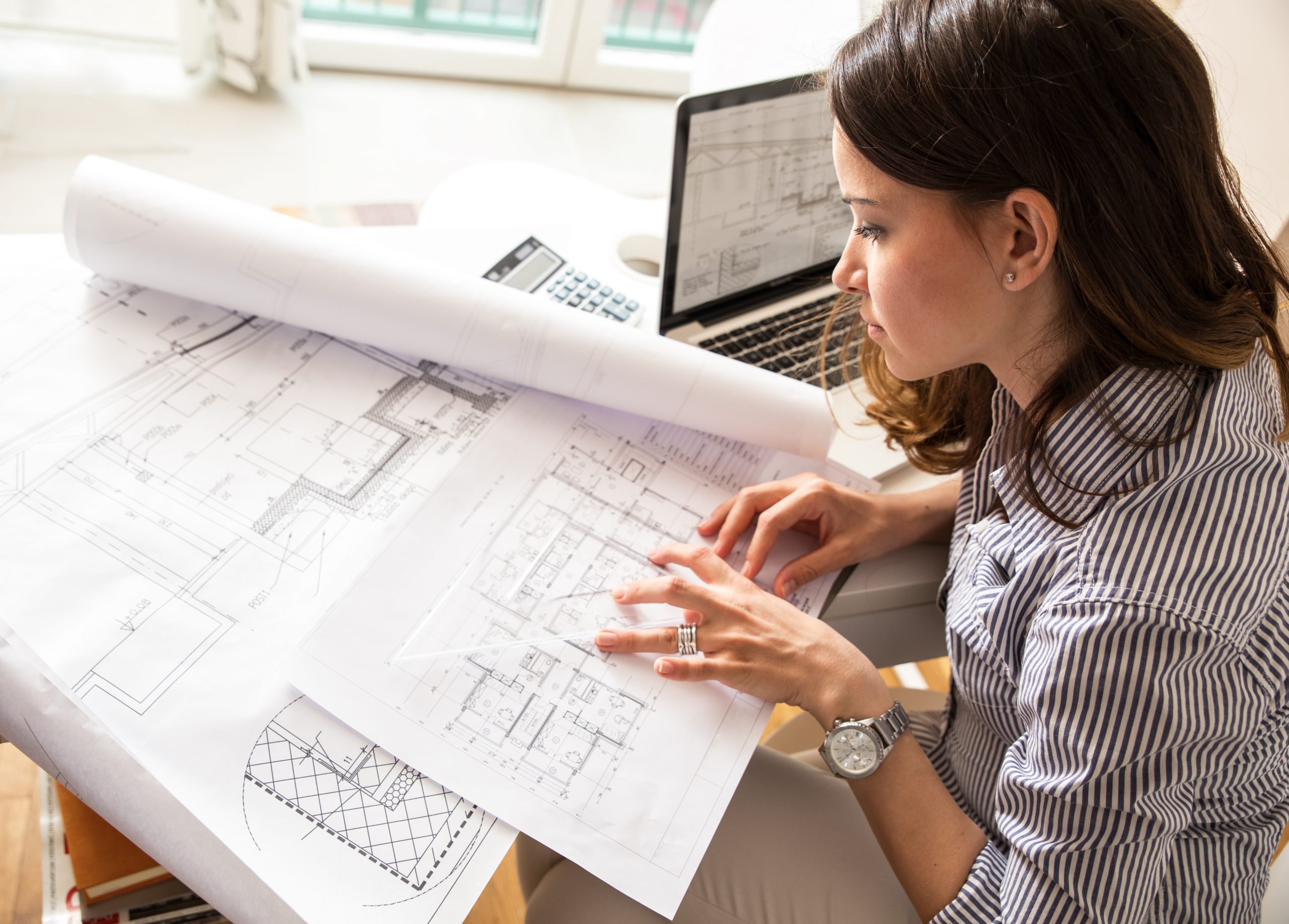Architect Rules for Designing Classic Interiors
Architect Rules for Designing Classic Interiors
Blog Article
Comprehending the Diverse Job Paths Available for Aspiring Architect
As an ambitious Architect, you have a globe of occupation courses waiting for you. Each course supplies special challenges and possibilities to apply your creativity and technological knowledge. Whether you're drawn to traditional architecture or the subtleties of sustainable layout, there's a specific niche that aligns with your passions. Recognizing these varied choices can form your expert trip, however which instructions will you select to check out initially?
Conventional Style: Creating Structures and structures
Standard design focuses on creating buildings and frameworks that mix performance with aesthetic allure. As you explore this area, you'll value the complex balance in between form and objective. You'll learn to attract motivation from historical designs, incorporating aspects like balance, products, and workmanship. Your styles can show social heritage, showcasing neighborhood customs while fulfilling modern-day demands.
You'll create skills in drafting, model-making, and site analysis, enabling you to picture and connect your ideas effectively. Involving with customers, you'll require to comprehend their vision and equate it right into feasible styles.
Furthermore, building codes and sustainability methods are crucial in your job, guaranteeing your frameworks are ecologically pleasant and safe. As you grow in your profession, you'll locate chances in household, business, or perhaps repair tasks, each offering distinct challenges. Embracing standard architecture leads the means for a satisfying occupation that admires the past while forming the future.
Urban Planning: Shaping Communities and Public Spaces
As an aspiring Architect, you can play an important duty as a city organizer, changing just how communities engage and work. By utilizing neighborhood involvement techniques, you'll guarantee that locals have a voice in forming their environment. And also, integrating lasting layout concepts will assist develop areas that not only fulfill today's demands but additionally protect the future.
Duty of Urban Planners
While lots of could think about engineers as the single dreamers behind buildings, metropolitan organizers play a crucial function fit the more comprehensive landscape of communities and public spaces. They analyze land usage, zoning regulations, and area needs to develop sustainable environments that enhance high quality of life. By collaborating with different stakeholders, you'll assist create parks, transportation systems, and houses that promote social communication and ease of access. Urban coordinators additionally concentrate on environmental factors to consider, making sure that advancements integrate green spaces and support biodiversity. Your proficiency in spatial style and neighborhood characteristics allows you to picture future development while preserving social heritage. In this critical duty, you'll straight influence just how individuals experience their environments, making every task a possibility for favorable change.
Neighborhood Engagement Strategies
Reliable area engagement strategies are essential for urban coordinators to guarantee that the voices of citizens are listened to and valued in the preparation procedure. To cultivate meaningful discussion, you must focus on open discussion forums and workshops where area members can express their ideas and concerns. By actively listening and integrating comments, you'll produce areas that show the neighborhood's needs, ultimately leading to even more successful and sustainable metropolitan settings.
Sustainable Design Concepts
When developing urban rooms, including lasting design principles is crucial for developing settings that grow both environmentally and socially. Consider incorporating eco-friendly rooms, like parks and yards, to boost biodiversity and improve air top quality.
Designing with water preservation in mind is also crucial-- consider rainfall gardens and absorptive surfaces to take care of stormwater. Involving area participants throughout the planning procedure guarantees that the areas you produce meet their requirements and encourage social interaction. By accepting these concepts, you'll add to vibrant, sustainable metropolitan landscapes that benefit everybody.

Landscape Design: Creating Lasting Exterior Atmospheres
As you explore landscape style, you'll discover important layout concepts that create practical and beautiful exterior spaces. Sustainable practices play a vital role in making certain these atmospheres thrive while decreasing ecological impact. Plus, you'll find a variety of occupation opportunities that allow you to make a real distinction in how individuals engage with nature.
Style Concepts in Landscape
Understanding style principles in landscape style is essential for creating lasting outdoor settings that harmonize with nature. You'll require to ponder components like percentage, scale, and balance to ensure your styles feel natural and welcoming. In addition, pay interest to seasonal modifications, developing with materials that enhance the environments year-round.
Sustainable Practices Summary
Lasting techniques in landscape style not just focus on appearances but likewise focus on environmental health and wellness and resource preservation. By incorporating indigenous plants, you boost biodiversity and minimize the requirement for chemical plant foods and pesticides. Implementing reliable irrigation systems helps preserve water and reduces overflow, protecting neighboring communities. You can design rooms that advertise soil wellness, such as making use of natural materials and practicing permaculture principles. Furthermore, integrating eco-friendly infrastructure, like rainfall gardens and permeable sidewalks, aids in stormwater monitoring and decreases city heat. You add to a healthier earth and provide areas that cultivate community connection when you create outside settings with sustainability in mind. Ultimately, these methods assure your styles benefit both people and the setting for years to find.
Occupation Opportunities Exploration
With a strong structure in sustainable techniques, landscape style supplies a range of career courses that enable you to make a significant effect on the environment. Urban organizers typically collaborate with landscape engineers to produce environment-friendly areas in urban setups, enhancing city livability. If you're enthusiastic about education and learning, think about coming to be a landscape design instructor, inspiring future generations.
Lasting Style: Concentrating on Eco-Friendly Practices
As you explore your occupation in architecture, accepting green practices can establish you apart in an affordable area. Lasting style concentrates on creating buildings that decrease environmental impact while boosting resident wellness. By including renewable materials, energy-efficient systems, and lasting building methods, you'll add to a greener future.
Start by acquiring understanding of green accreditations like LEED or BREEAM, which can strengthen your credentials. Think about exactly how all-natural light, air flow, and thermal performance can optimize design. Work together with designers and ecological consultants to innovate services that minimize waste and preserve sources.
Do not fail to remember the value of neighborhood involvement-- engaging regional stakeholders can influence layouts that harmonize with the atmosphere. As clients progressively focus on sustainability, your proficiency in green techniques will certainly not just bring in jobs however likewise meet your enthusiasm for accountable design. Welcome this crucial aspect of the profession, and watch your career prosper.
Historic Preservation: Shielding and Recovering Social Heritage
While you begin on your architectural journey, consider the essential duty of historical conservation in preserving our social heritage. This field concentrates on the protection and reconstruction of substantial structures, websites, and structures that tell the tales of our past. By involving in historic conservation, you'll aid protect the building heritage that forms neighborhood identity.
As a historical conservation Architect, you'll evaluate historic relevance and assess the problem of frameworks. You'll work very closely with guardians and chroniclers to assure authentic reconstruction methods are used. This profession course enables you to blend imagination with research, enabling you to make services that appreciate initial products and craftsmanship.
Your work not just adds to sustainability by recycling existing buildings yet likewise cultivates a sense of pride within neighborhoods. Embracing this path will certainly aid you become a guardian of history, protecting the tales and looks that enrich our lives.
Interior Design: Enhancing Indoor Spaces
Historic conservation and indoor architecture both share a commitment to improving the constructed setting, but they concentrate on various facets. While historic preservation stresses keeping a structure's cultural and historical worth, interior style zeroes in on enhancing interior rooms for performance and aesthetics.
As a hopeful Architect, you'll discover that indoor design allows you to blend imagination with technical skills. You'll create areas that not just look great but also promote comfort and efficiency. This area involves understanding how light, color, and materials communicate within a space, impacting mood and usability.
You'll work with various projects, from household homes to business workplaces, making sure that each atmosphere satisfies the requirements of its owners. By focusing on customer experience, you can change interiors into practical and inspiring spaces, making a significant effect on just how people engage with their environments. Accept the opportunity to enhance indoor atmospheres and shape the means individuals work and live.
Industrial Style: Merging Functionality With Visual Appeals
Commercial style plays a necessary function in producing products that seamlessly mix aesthetic appeals with functionality, making certain that what you use daily is not just visually enticing however also functional. As an aspiring Architect, you could involve yourself in this area, concentrating on developing everything from furnishings to customer electronic devices. Your job includes recognizing customer needs, products, and manufacturing processes, permitting you to develop ingenious solutions that improve everyday experiences.
In industrial layout, you'll typically collaborate with designers, online marketers, and makers, making sure that your designs are not only attractive but likewise practical. You'll learn to stabilize kind and feature, focusing on usability without sacrificing style. By refining your abilities in sketching, 3D modeling, and prototyping, you'll be well-equipped to bring your concepts to life. This job course offers useful site a dynamic environment where imagination satisfies functionality, making it a fulfilling option for designers curious about forming the items of tomorrow.
Regularly Asked Inquiries
What Educational Qualifications Do I Required to End Up Being an Architect?
To come to be a designer, you'll require a professional degree in design, normally a Bachelor's or Master's. Furthermore, you'll have to complete a teaching fellowship and pass the Architect Enrollment Assessment to practice legally.
Exist Accreditation Requirements for Various Architectural Job Paths?
Yes, there're accreditation demands for various building paths. Architect. You'll require to pass exams, total teaching fellowships, and often pursue specialized training, depending on your picked focus, like landscape style, metropolitan style, or historic conservation
What Software Application Abilities Are Vital for Engineers Today?

How Can I Gain Practical Experience While Researching Architecture?
You can gain functional experience by interning at architectural companies, taking part in layout competitions, volunteering for neighborhood jobs, or collaborating with schoolmates on real-world assignments. These possibilities enhance your abilities and this website develop important links in the industry.
What Task Opportunities Exist Outdoors Typical Architecture Firms?
You can check out numerous job possibilities outside traditional design companies, like metropolitan preparation, interior style, landscape style, construction administration, realty growth, or even functions in sustainability consulting. Each deals unique difficulties and incentives.
Whether you're attracted to typical architecture or the nuances of lasting layout, there's a niche that aligns with your rate of interests.When developing city rooms, incorporating sustainable design principles is vital for creating atmospheres that prosper both ecologically and socially.As you discover landscape style, you'll uncover essential style principles that produce functional and beautiful exterior spaces.Understanding design principles in landscape architecture is important view for producing lasting outdoor environments that harmonize with nature.In commercial layout, you'll often collaborate with marketing experts, designers, and producers, ensuring that your layouts are not just lovely but also viable.
Report this page